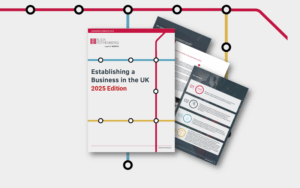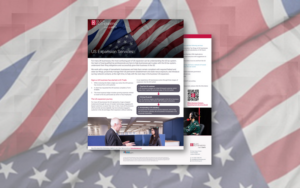Spotlight on… Corporate Interest Restriction (CIR)
Ravi Singh Basra looks at Corporate Interest Restriction (CIR) and provides an overview of the rules and certain practical considerations.
Why is it relevant
2022 was a challenging year, with rampant inflation fuelling a cost-of-living crisis that resulted in the Bank of England (B of E) increasing the Bank rate nine consecutive times from its historic low of 0.25% to 3.5%. With further interest rate hikes potentially on the horizon, the impact of these increases should not be underestimated. Borrowers with variable rate debt have seen their debt costs rise significantly over a short period of time with very little opportunity to cushion the impact.
For UK companies, these increasing finance costs could also result in unanticipated tax consequences. More UK companies and groups could be caught by the UK CIR rules and find that tax relief is restricted for their finance costs. The impact of this will be further compounded from 1 April 2023 when the main rate of Corporation Tax increases to 25%.
For a UK company or group, there are interest limitation rules that can restrict the amount of tax relief available for interest and finance costs. When introduced in April 2017, the rules were aimed at highly leveraged large multi-national groups, however, these have inadvertently caught many standalone companies.
The aim of the rules is to restrict company or group deductions for interest expense and other financing costs to an amount which is commensurate with its taxable activities within the UK, taking account how much the company or group borrows from third parties.
The CIR rules essentially limit the amount of net tax interest costs (applying UK tax principles) a company or group can deduct from its taxable profits if these exceed £2m per annum. The increase in interest rates is likely to push more companies within the CIR regime. The actual mechanics of the CIR calculation are unnecessarily complex.
Who does it affect?
In principle, the rules apply to all companies within the charge to Corporation Tax. The CIR rules apply to individual companies or groups of companies that will deduct over £2m of net tax interest in a 12-month period.
A company or group with less than £2m of net tax interest expense, and other financing costs per annum, will not suffer any restriction. Beyond taking reasonable care to establish that this is the case, companies in such groups are not affected by the rules. Establishing if a company or group falls below the de-minimis is itself a detailed exercise.
What do you need to know
For a company or group with net tax interest costs exceeding the de-minimis threshold of £2m, you must work out the ‘interest allowance’. This is the maximum amount of net tax interest and financing costs the company or group can deduct in the period of account. You can use the ‘fixed ratio method’ or the ‘group ratio method’ to calculate the above and should use the method that gives you the largest allowance.
The default position for a CIR calculation is the fixed ratio method to calculate the basic interest allowance, which is the lower of:
- 30% of the company’s or group’s UK taxable profits before interest, taxes, capital allowances and some other tax reliefs or
- the fixed ratio debt cap
A higher cap may potentially apply in certain group situations under the group ratio method. This may be beneficial for highly leveraged groups and is subject to the making of a formal election. This higher cap is unlikely to be beneficial for wholly UK domestic groups funded with local debt.
What should you do next
For all UK companies and groups, a calculation should be performed each year to confirm that the net tax interest expense is below the £2m threshold. As this calculation is based on UK tax principles, this requires a more in-depth analysis than simply using the figures from financial statements.
Where net tax interest costs exceed the de-minimis and a restriction is expected to apply, there are certain compliance aspects that need to be met including notifying HMRC of the appointment of a reporting company and submission of a CIR return.
If interest deductions are not restricted, it may still be beneficial to appoint a reporting company and submit an abbreviated annual return, as this may allow the carry forward of certain allowances.
It should be noted that from 1 September 2022, CIR returns must be filed electronically using either the HMRC online form template or commercial software with an Application Programming Interface.
Would you like to know more?
If you would like to discuss the above matter, please get in touch with your usual Blick Rothenberg contact or Ravi Singh Basra using the details on this page or the form below.
Contact Ravi

You may also be interested in

Unlocking Growth: What the Government’s 2025 Industrial Strategy Means for the UK’s Creative Sector

A ray of hope for the Property Market: HMRC transaction data suggests recovery momentum













